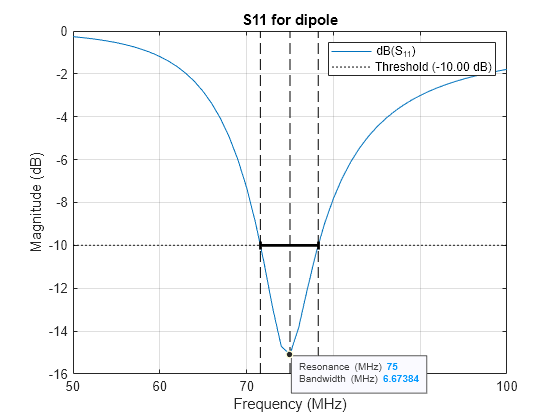bandwidth
Syntax
Description
absBW = bandwidth(___)absBW for the specified antenna or
array at each resonant frequency within the specified frequency range.
[
calculates and returns the absolute bandwidths absBW,fRES,fL,fU,S] = bandwidth(___)absBW at each resonant
frequency in fRES, and the lower (fL) and upper
(fU) bounds for the specified antenna or array.
absBW and fRES are empty if no bandwidth or resonant
frequency is detected within the specified frequency range. absBW and
fRES are vectors when there are more than one bandwidths.
S is a vector of all the S11 values across the
specified frequency range.
[___] = bandwidth(___,
specifies additional options using one or more Name-Value Arguments. For example,
Name=Value)bandwidth(dipole,60e6:1e6:80e6,Threshold=-10) marks the bandwidth on
the S11 plot of dipole in 60 MHz to 80 MHz range with an
S11 threshold of -10 dB.
Examples
Input Arguments
Name-Value Arguments
Output Arguments
Version History
Introduced in R2024a

